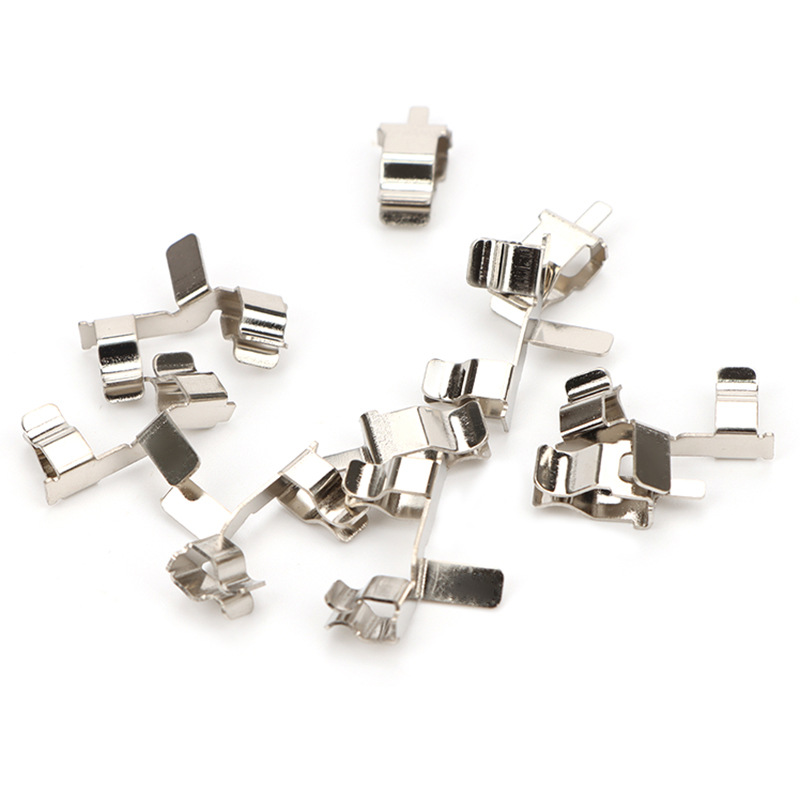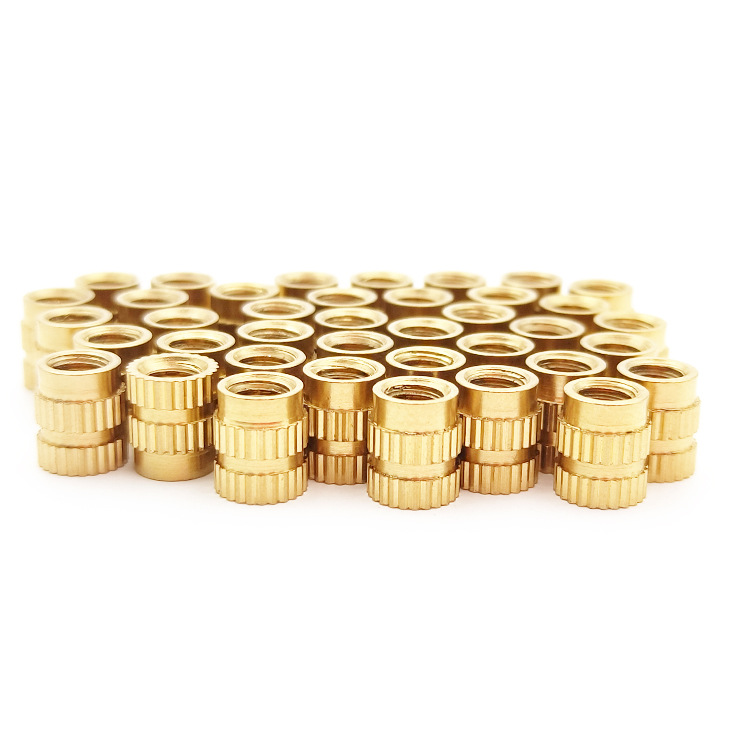Better Touch Better Business
Contact Sales at MDM Metal
In order to improve the performance of molds, many manufacturers will perform appropriate processing on their molds. Mold processing refers to the processing of forming and blank making tools, as well as shear molds and die-cutting molds. However, in many cases, the completion of mold processing will also reflect processing defects, leading to a decrease in mold performance. So how to build mold processing defects? The following seven measures can be taken to address mold processing defects.

1. Reasonable selection and dressing of grinding wheels
The use of white corundum grinding wheel is better, as its performance is hard and brittle, and it is easy to generate new cutting edges. Therefore, the cutting force is small, and the grinding heat is small. It is better to use medium particle size, such as 46-60 mesh, in terms of particle size. Medium soft and soft (ZR1, ZR2, R1, R2) are used in terms of hardness of the grinding wheel, that is, coarse and low hardness grinding wheel. Good self excitation can reduce cutting heat.
It is important to choose an appropriate grinding wheel during precision grinding. For the high vanadium and high molybdenum conditions of mold steel, it is more suitable to choose GD single crystal corundum grinding wheel. When processing hard alloys and materials with high quenching hardness, diamond grinding wheels with organic binders are preferred. The organic binder grinding wheel has good self grinding performance, and the roughness of the ground workpiece can reach Ra0.2 μ m.
In recent years, with the application of new materials, CBN (cubic boron nitride) grinding wheels have shown very good machining results, and their precision machining results are superior to other types of grinding wheels on CNC forming grinders, coordinate grinders, and CNC internal and external cylindrical grinders. In grinding processing, it is important to promptly trim the grinding wheel to maintain its sharpness. When the grinding wheel is passivated, it may slip and squeeze on the surface of the workpiece, causing surface burns and reduced strength.
2. Reasonable use of cooling and lubricating fluids
Utilize the three major functions of cooling, washing, and lubrication to maintain cooling, lubrication, and cleanliness, thereby controlling the grinding heat within the allowable range and preventing thermal deformation of the workpiece. Improve the cooling conditions during grinding, such as using oil immersed grinding wheels or internally cooled grinding wheels. Introduce cutting fluid into the center of the grinding wheel, which can directly enter the grinding area, exerting an effective cooling effect and preventing surface burns of the workpiece.
3. Minimize the quenching stress after heat treatment
Due to quenching stress and network carbonization structure, under the action of grinding force, the phase transformation of the structure is easily caused to cause cracks in the workpiece. For high-precision molds, in order to eliminate residual stress during grinding, low-temperature aging treatment should be carried out after grinding to improve toughness.
The vacuum heat treatment of the mold includes preliminary heat treatment, final heat treatment, and surface strengthening treatment. Usually, heat treatment defects refer to various defects that occur during the final heat treatment process or subsequent processes of the mold, as well as during use, such as quenching cracks, deformation exceeding tolerance, insufficient hardness, electrical machining cracks, grinding cracks, early damage to the mold, etc. Let's learn more about these defect prevention measures together with the editor below!
Quenching crack
The causes and preventive measures for quenching cracks are as follows:
1. The shape effect is mainly caused by design factors, such as too small rounded corner R, improper hole position setting, and poor cross-section transition.
2. Overheating (overburning) is mainly caused by inaccurate temperature control or runaway, non-standard and unreasonable vacuum heat treatment processes, especially insufficient tempering. Due to factors such as excessively high temperature and uneven furnace temperature, preventive measures include maintenance, calibration of the temperature control system, correction of process temperature, and adding iron pads between the workpiece and the furnace bottom plate.
3. Decarburization is mainly caused by overheating (or overburning), unprotected heating in air furnace, small machining allowance, residual decarburization layer in forging or preparatory heat treatment, etc. The preventive measures are controlled atmosphere heating, salt bath heating, Vacuum furnace and box furnace using box protection or using anti oxidation coating; Increase machining allowance by 2-3mm.
4. Improper cooling is mainly caused by improper selection of coolant or undercooling, and it is necessary to master the cooling characteristics of the quenching medium or tempering treatment.
5. Poor raw material organization, such as severe carbide segregation, poor forging quality, improper preparation heat treatment methods, etc. The preventive measures are to use the correct forging process and reasonable preparation heat treatment system.
Insufficient hardness
The reasons and preventive measures for insufficient hardness are as follows:
1. The quenching temperature is too low, mainly due to improper process setting temperature, temperature control system error, improper loading or cooling tank method, etc. The process temperature should be corrected, and the temperature control system should be inspected and verified. When loading, the workpiece should be reasonably spaced and evenly distributed into the tank, and stacking or bundling into the tank for cooling is prohibited.
2. The quenching temperature is too high, which is caused by improper process setting temperature or temperature control system error. The process temperature should be corrected, and the temperature control system should be inspected and verified.
3. Overtempering is caused by excessive tempering temperature setting, temperature control system malfunction error, or furnace entry when the furnace temperature is too high. The process temperature should be corrected, and the temperature control system should be inspected and verified to ensure that it is not higher than the set furnace temperature.
4. Improper cooling, due to excessive pre cooling time, improper selection of cooling medium, gradual increase in quenching medium temperature and decrease in cooling performance, poor stirring or high outlet temperature. Measures: Quickly discharge and enter the tank; Master the cooling characteristics of quenching medium; When the oil temperature is 60-80 ℃ and the water temperature is below 30 ℃, when the quenching amount is large and the cooling medium heats up, cooling quenching medium should be added or other cooling tanks should be used for cooling; Strengthen the stirring of the coolant; Take out at Ms+50 ℃.
5. Decarburization, which is caused by residual decarburization layer of raw materials or quenching heating. The preventive measures are controlled atmosphere heating, salt bath heating, Vacuum furnace, box furnace using box protection or using anti oxidation coating; Increase machining allowance by 2-3mm.
Deformation deviation
In mechanical manufacturing, quenching deformation during heat treatment is absolute, while non deformation is relative. In other words, it's just a matter of deformation size. This is mainly due to the surface relief effect of martensite transformation during heat treatment. Preventing heat treatment deformation (size and shape changes) is a very difficult task, and in many cases, it has to be solved through experience.
This is because not only does the steel grade and mold shape have an impact on heat treatment deformation, but improper carbide distribution and forging and heat treatment methods can also cause or exacerbate it.
Moreover, in many conditions of heat treatment, as long as a certain condition changes, the degree of deformation of the steel component will have a significant change.
Although experience and exploratory methods have been relied on for a considerable period of time to solve the problem of heat treatment deformation, it is extremely meaningful to correctly grasp the relationship between raw material forging, module orientation, mold shape, heat treatment methods, and heat treatment deformation, grasp the heat treatment deformation rules from the accumulated actual data, and establish archives related to heat treatment deformation.
decarbonization
Decarbonization is the phenomenon and reaction of steel parts losing all or part of the carbon on the surface layer due to the effect of the surrounding atmosphere during heating or insulation. The decarburization of steel components not only causes insufficient hardness, quenching cracking, heat treatment deformation, and chemical heat treatment defects, but also has a significant impact on fatigue strength, wear resistance, and mold performance.
Cracks caused by electric discharge machining
In mold manufacturing, the use of discharge machining (electric pulse and wire cutting) is becoming increasingly common. However, with the widespread application of discharge machining, the number of defects caused by it also increases accordingly.

Due to the fact that discharge machining is a machining method that utilizes the high temperature generated by discharge to melt the surface of the mold, a white discharge machining metamorphic layer is formed on its machining surface, and a tensile stress of around 800MPa is generated. As a result, defects such as deformation or cracks often occur during the machining process of the mold. Therefore, for molds using discharge machining, it is necessary to fully understand the impact of discharge machining on the mold material and take corresponding preventive measures in advance.
Prevent overheating and decarburization during heat treatment, and conduct sufficient tempering to reduce or eliminate residual stress; In order to fully eliminate the internal stress generated during quenching, high-temperature tempering is required. Therefore, steel grades that can withstand high-temperature tempering (such as Crl2 type, ASP-23, high-speed steel, etc.) should be used for processing under stable discharge conditions; After discharge machining, perform stabilization and relaxation treatment; Set reasonable process holes and grooves; Fully eliminate the re solidified layer for use in a sound state; By using the principle of vector translation, the internal stress in the concentrated part of the cutting outpost can be drained and released through a decentralized manner.
Insufficient resilience
The reason for insufficient toughness may be due to excessively high quenching temperature and prolonged holding time, resulting in grain coarsening, or due to failure to avoid tempering in the brittle zone.
Grinding cracks
When there is a large amount of residual austenite in the workpiece, tempering transformation occurs under the action of grinding heat, resulting in structural stress and leading to workpiece cracking. The preventive measure is to perform deep cooling treatment or multiple repeated tempering after quenching (mold tempering is usually 2-3 times, even for low alloy tool steel used for cold working), to minimize the amount of residual austenite.
Copyright © 2015-2023 MDM Metal All Rights Reserved
 Send A Message
Send A MessageIf you are interested in our products and want to know more details,please leave a message here,we will reply you as soon as we can.